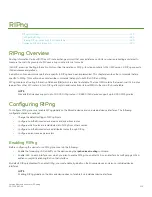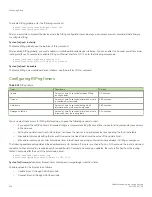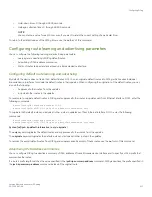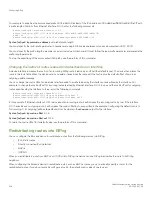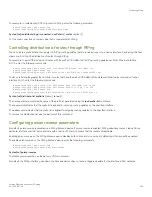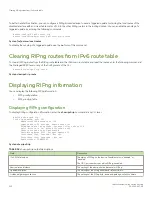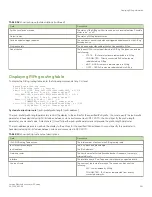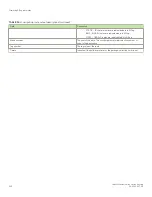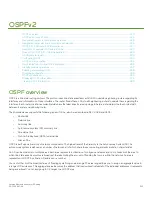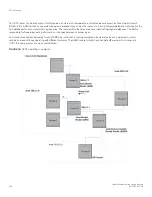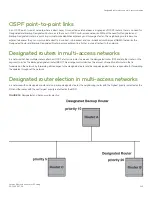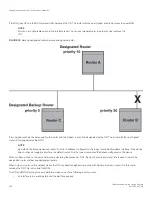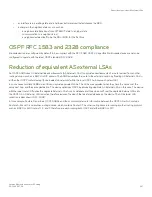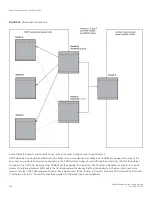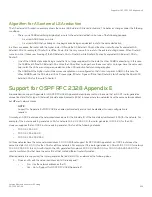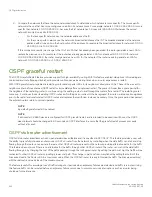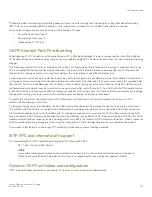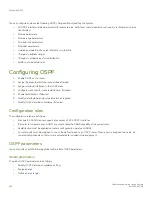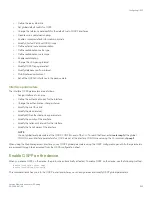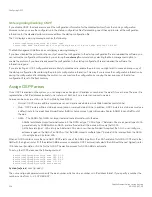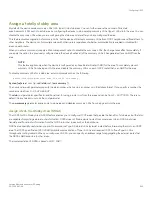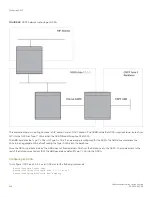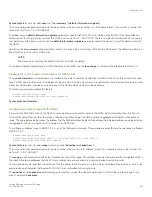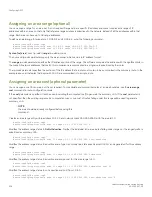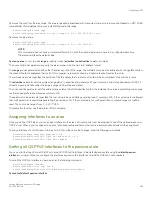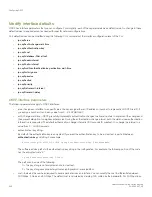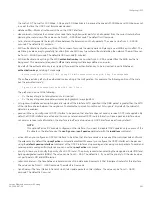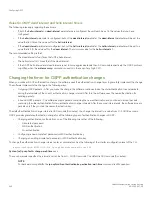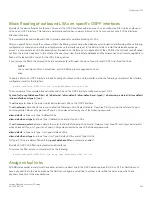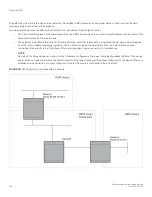
Algorithm for AS external LSA reduction
The AS external LSA reduction example shows the normal AS External LSA reduction feature. The behavior changes under the following
conditions:
•
There is one ASBR advertising (originating) a route to the external destination, but one of the following happens:
–
A second ASBR comes on-line
–
A second ASBR that is already on-line begins advertising an equivalent route to the same destination.
In either case above, the router with the higher router ID floods the AS External LSAs and the other router flushes its equivalent AS
External LSAs. For example, if Router D is offline, Router E is the only source for a route to the external routing domain. When Router D
comes on-line, it takes over flooding of the AS External LSAs to Router F, while Router E flushes its equivalent AS External LSAs to
Router F.
•
One of the ASBRs starts advertising a route that is no longer equivalent to the route the other ASBR is advertising. In this case,
the ASBRs each flood AS External LSAs. Since the LSAs either no longer have the same cost or no longer have the same next-
hop router, the LSAs are no longer equivalent, and the LSA reduction feature no longer applies.
•
The ASBR with the higher router ID becomes unavailable or is reconfigured so that it is no longer an ASBR. In this case, the
other ASBR floods the AS External LSAs. For example, if Router D goes off-line, then Router E starts flooding the AS with AS
External LSAs for the route to Router F.
Support for OSPF RFC 2328 Appendix E
Brocade devices support Appendix E in OSPF RFC 2328. Appendix E describes a method to ensure that an OSPF router generates
unique link state IDs for type-5 (External) link state advertisements (LSAs) in cases where two networks have the same network address
but different network masks.
NOTE
Support for Appendix E of RFC 2328 is enabled automatically and cannot be disabled. No user configuration is
required.
Normally, an OSPF router uses the network address alone for the link state ID of the link state advertisement (LSA) for the network. For
example, if the router needs to generate an LSA for network 10.1.2.3 255.0.0.0, the router generates ID 10.1.2.3 for the LSA.
However, suppose that an OSPF router needs to generate LSAs for all the following networks:
•
10.0.0.0 255.0.0.0
•
10.0.0.0 255.255.0.0
•
10.0.0.0 255.255.255.0
All three networks have the same network address, 10.0.0.0. Without support for RFC 2328 Appendix E, an OSPF router uses the
same link state ID, 10.0.0.0, for the LSAs for all three networks. For example, if the router generates an LSA with ID 10.0.0.0 for network
10.0.0.0 255.0.0.0, this LSA conflicts with the LSA generated for network 10.0.0.0 255.255.0.0 or 10.0.0.0 255.255.255.0. The
result is multiple LSAs that have the same ID but that contain different route information.
When appendix E is supported, the router generates the link state ID for a network as the following steps.
1. Does an LSA with the network address as its ID already exist?
•
–
No - Use the network address as the ID.
–
Yes - Go to "Support for OSPF RFC 2328 Appendix E".
Support for OSPF RFC 2328 Appendix E
FastIron Ethernet Switch Layer 3 Routing
53-1003627-04
229
Summary of Contents for FastIron SX 1600
Page 2: ...FastIron Ethernet Switch Layer 3 Routing 2 53 1003627 04 ...
Page 16: ...FastIron Ethernet Switch Layer 3 Routing 16 53 1003627 04 ...
Page 20: ...FastIron Ethernet Switch Layer 3 Routing 20 53 1003627 04 ...
Page 142: ...FastIron Ethernet Switch Layer 3 Routing 142 53 1003627 04 ...
Page 150: ...FastIron Ethernet Switch Layer 3 Routing 150 53 1003627 04 ...
Page 200: ...FastIron Ethernet Switch Layer 3 Routing 200 53 1003627 04 ...
Page 214: ...FastIron Ethernet Switch Layer 3 Routing 214 53 1003627 04 ...
Page 350: ...FastIron Ethernet Switch Layer 3 Routing 350 53 1003627 04 ...
Page 476: ...FastIron Ethernet Switch Layer 3 Routing 476 53 1003627 04 ...
Page 588: ...FastIron Ethernet Switch Layer 3 Routing 588 53 1003627 04 ...

